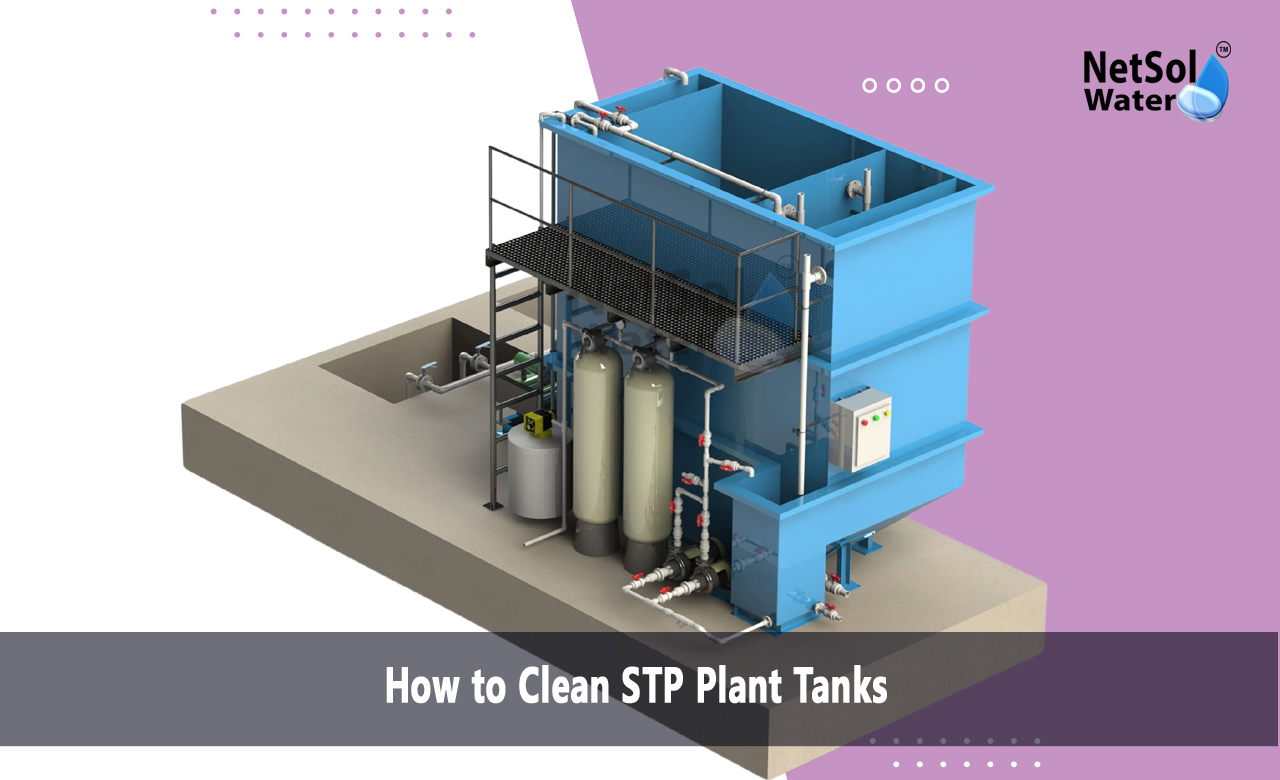How to Clean Sewage Treatment Plant Tanks?
Sewage Treatment Plant tank plays an essential role in water treatment. With time, there are sludge, garbage, and microbial masses adhering to the tanks that decrease the water treatment speed. It must be cleaned every once in a while, so that it can be as effective as it is supposed to be, isn't clogged, and make water fit enough to be utilized.
STP tank cleaning is a process that involves several steps such as preparation, removal of sludge, washing, and reactivation of the system. The following is a step-by-step procedure on how to clean STP tanks effectively.
Preparation Prior to Cleaning
· Prior to the commencement of the cleaning process, preparation is necessary. The STP plant must be safely shut down to prevent contamination or damage.
· The first step is to turn off the pumps, aerators, and other equipment that is attached to the tank. This prevents any form of disruption while cleaning. The second step is to turn off the entry of wastewater into the tank so that it can drain properly. Safety gear, e.g., gloves, masks, and boots, also must be used by operators because STP sludge contains harmful microorganisms and gases.
· Once the system is switched off and the personnel are in place, the tank is prepared to be cleaned.
Draining the Tank
Drain.ence to environmental laws while discharging sludge is crucial. Discharging of sludge in an improper manner can lead to environmental pollution as well as law enforcement problems.
Removal of Sludge and Residues
· Second operation following the tank draining process is the removal of the sludge, scum, and residues adhering to the floor and wall surfaces. Such items are removed through vacuum trucks, sludge pumps, or mechanical scrubbing for scraping off hardened deposits.
· Chemicals are employed to remove hardened sludge deposits in some cases. Non-toxic and biodegradable detergents should still be employed in an effort to eliminate contamination upon system restoration of the STP system.
· Successful sludge removal ensures there is no residual organic residue left inside the tank, which would lead to odors and bacterial growth.
Tank Interior Cleaning
· After sludge is removed, tank fittings, bottom, and the walls internally are to be completely cleaned with the removal of biofilm and mineral deposits. Mechanical use of high-pressure water jets or brushes achieves this.
· Slightly disinfected cleaning agents or cleaners are ideal for highly fouled tanks. A cleaning of the tank to prevent an remaining residual chemical is ideal before operating the system.
· Aeration diffusers, tubes, and other internal fixtures should also be inspected and cleaned because clogged diffusers will decrease oxygen flow and affect STP function.
Inspection and Repairs
· The entire tank should be inspected for damage, leaks, or structural failure after cleaning. Corrosion, cracks, and worn-out fixtures should be repaired to prevent future failure.
· Checking of metal components for rust, pipe leaks, and sediment in drain outlets guarantees that the STP is in its best condition after cleaning. Maintenance at this stage reduces the risk of premature failure.
Re-establishment of the STP System through Refilling and Re-initiating
· Refill the tank slowly after cleaning and checking to re-establish the sewage treatment process. Inflow of wastewater is introduced slowly to allow microorganisms in the treatment process to acclimatize.
· The aeration cycle must be started again with a guarantee of oxygen supply before startup at full load. In case chemical dosing is a part of the treatment process, it must be readjusted as per STP standards.
· Once the system has been turned on, operation should be monitored for the subsequent hours to ensure for any aberrations such as leaks, blockages, or unusual odors.
Conclusion
STP tank cleaning is necessary for efficiency, odour removal, and quality of treated water. Shutdown in an orderly fashion, removal of sludge and residue, washing the tank, damage inspection, and system restart in a stepped way are part of the process.
Daily cleaning improves the lifetime of STP equipment and prevents costly maintenance. It also maintains that there is compliance with environmental regulations, and wastewater treatment is safe and effective. With proper cleaning procedures, STP plants can perform at their optimal capacity and contribute to a cleaner and healthier environment.
Do you need an advice or assistance on selecting the best water and waste water treatment unit? We have solutions for all your problems!
Let us know your problem, our experts will make sure that it goes away.
For an assistance or related query,
Call on +91-965-060-8473 Or write us at enquiry@netsolwater.com



